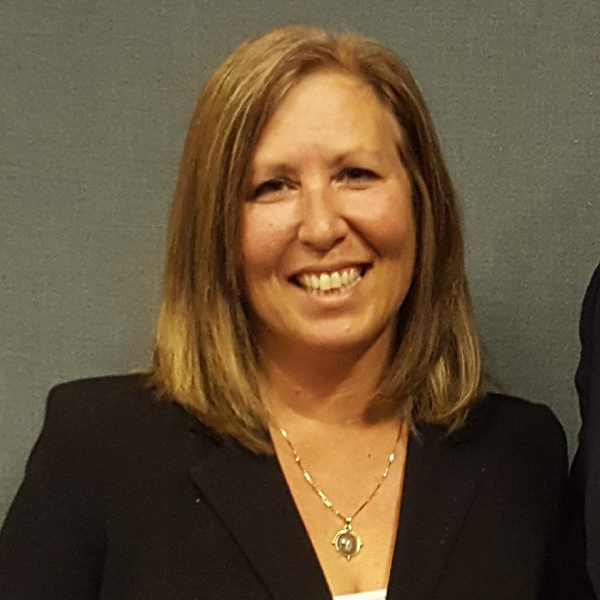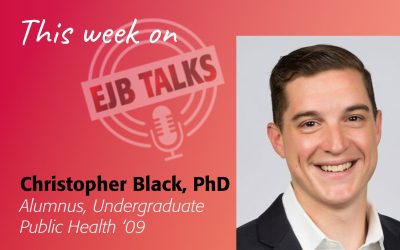Stuart Shapiro welcomes Lisa Gulla, epidemiologist, disease investigator, and Bloustein lecturer in this week’s episode of EJB Talks for a candid discussion about the challenges facing local level disease investigators during the COVID-19 pandemic. She reveals how data can be misconstrued and misinterpreted by well-meaning officials, information-hungry media, as well as “arm-chair” epidemiologists.
Stuart Shapiro
Welcome to another episode of EJB Talks. I’m Stuart Shapiro, the Associate Dean of Faculty at the Bloustein School. And the purpose of this podcast is to talk with my colleagues and our alumni about issues affecting people in New Jersey, the United States, and the world. Today, after three episodes on the George Floyd protests, we return to COVID-19. Lisa Gulla teaches epidemiology at the Bloustein School. Recently, she’s also been helping out Bridgewater Township here in New Jersey, as their disease investigator since COVID hit. Lisa, thanks for joining us.
Lisa Gulla
Thank you for having me.
Stuart Shapiro
Okay, we have a wide-ranging audience. Some people know public health very well. Others know policy, planning, other things. So, I was wondering if we could start out by you giving a basic explanation of what epidemiology is.
Lisa Gulla
Sure. So, by definition, the technical term would be the study of the distribution and determinants of health-related states and events in specified populations, and then the application of that is what we use to control health problems. In other words, it’s the method we use to find the causes of health outcomes and diseases in populations. In epidemiology, the patient is actually the community. And individuals are really viewed collectively.
Stuart Shapiro
Very good. Well, the public in public health, in other words. So many of us, certainly including me, have become what I would call armchair amateur epidemiologists in the past three months. Swallowing up data about the spread of COVID-19, trying to figure out what’s going to happen, whether my kids are going to go to school in the fall. Whether or not I’m going to go back to work in person in the fall or in the spring. We read a story, we jump to conclusions about COVID-19 getting better or getting worse. So let me ask you sort of as someone who knows the field well when you see the media coverage about COVID-19, what could they be doing better in terms of communication?
Lisa Gulla
So, I have to say that initially, really, the media has been really pretty diligent on distributing the different epi curves and charts showing the progression of the pandemic. I think the issue really comes in the interpretation. Often numbers can be manipulated to serve the focus of the story they want to tell. And I think it’s that interpretation where the media can be more responsible and diligent. You know, I’ve had or we’ve had, you know, towns, counties, and the state, they all put these data pieces out, as you said. The case counts and different statistics on their websites. And, obviously, they’re trying to do it to be transparent and communicate what’s going on locally. But, residents started to get concerned because the information that was being reported wasn’t matching across all of these different venues. So, and then on top of it, you have the media, picking it up and using county or state data. I know, at one point I read an article on which towns have the highest case counts and highest death rates. So the problem with that information is, all of our data is a moment in time. So if the town I was working for collected at 8am, and the state at 11am, and the county at 3pm, there’s no way that everything’s going to match, because new cases would come in all day long as the labs reported. And then kind of like you said, Stuart, a lot of the people would decide to be armchair epis, and they would do their own calculations and, you know, they look at percentages of deaths compared to case counts. And another problem with that was the sample size was just too small to make a true and valid statement. And are you using the percentage based on the number of deaths, based on the number of cases? Or were you doing it based on the number of people in the entire town? Two totally different results.
Stuart Shapiro
Right. So should we, I mean, you mentioned the moment in time problem, should we be looking at sort of rates of change and seven-day averages and things like that, rather than sort of data at a moment in time?
Lisa Gulla
I think what it would have to be is, you need to look at the same piece of data each day. Because that’s the report out. So you can’t compare what the county has written for your town, compared to what your town is reporting. So it’s whatever you’re using, stick with it. But so… I was going to say but that’s not what happens. So, unfortunately, we get apples to oranges.
Stuart Shapiro
So even with that, I mean, there’s still context that you need. Because if you’re looking at cases, that’s going to change as the number of tests changes.
Lisa Gulla
Absolutely. And that’s a whole other component of it. So, as we started doing long-term care centers, it became, obviously because of their high risk, became a high focus in the state of New Jersey. And so, the governor when he issued the order that we had to use a… that all the long-term care facilities needed to use a test based strategy, we expected a surge of cases. Because there were asymptomatic people that hadn’t gone to be tested because the rules were unless you were showing symptoms, you shouldn’t be going to get a test, save them for everyone else.
Stuart Shapiro
Sure.
Lisa Gulla
So the numbers would definitely fluctuate. And then, ironically, what would happen, when I got up in the morning and I looked at my list of new cases, and maybe I saw 25 new cases because they all had the addresses of the long-term care facility. But if it was employees, I then now had to transfer those cases, to the town for that local health department to continue following up. So it really wasn’t a case in my town, but if they were reporting it based on 8am, and then probably by one o’clock in the afternoon, we had a big change in numbers.
Stuart Shapiro
Right. Obviously, the question of opening up the economy is a complex one and one very much on everybody’s mind. Given everything you’ve said, what would you like to see officials be thinking about? What benchmarks, etc., should they contemplate from a public health perspective as they weigh this question?
Lisa Gulla
So that’s definitely a multi-dimensional question. If we’re talking about case lists then we have to monitor, are we seeing an uptick again? Are we seeing that it’s flattening? When we’re looking at opening up from an overall public health perspective, we need to help towns, you know, focus on how to get the community open again, but keep the public health perspective in the forefront. So, what does that really mean? It means we have to consider how we’re going to enforce the regulations that are put in place to maintain the health of our community. If someone, and this actually, ironically happened to me the other day, if someone walks into a store with no mask, how do we know that the store owners are going to insist they leave without losing more business?
Stuart Shapiro
Right.
Lisa Gulla
What type of staffing levels do we need to get back out there to inspect the pools, the youth camps, the restaurants so they can open? Which was, you know, a normal task before, and now there are other issues we have to be aware of. Who’s going to make sure the pools are enforcing the mask restrictions? And whether they’re allowed to wear a mask or when they can. And, really looking at those issues and then on top of it, public health has to start addressing some of the issues that we usually take care of, which generally took a backseat to COVID. So immunizations, I’m sure you’ve heard about. Lead investigation.
Stuart Shapiro
Right.
Lisa Gulla
Public health nuisance complaints. And as we do start opening up, there’s going to be people who ignore the regulations, like what I had just mentioned. Or there are others that are going to do everything right, and are still going to end up contracting the virus. This leads into a little bit of the contact tracing that the governor has put into effect. So, we have to balance all this out with needing to reopen for the financial and mental health of our residents. So yeah, as you said, pretty complex.
Stuart Shapiro
Yeah, multi-dimensional captures it nicely as you noted there. Let me turn to your other position because I think our listeners will be interested in the on-the-ground perspective. What does it mean to be a disease investigator?
Lisa Gulla
So, that’s really…basically when you’re a disease investigator, you’re responsible for investigating any situation concerning an individual who may have been in contact with a communicable disease, which could potentially result in them becoming infected. One aspect of this includes the contact tracing that I was just mentioning that the Governor is putting into place. But overall, when you’re doing case investigations, we have our public health staff that works with a patient to help them really recall everyone with whom they had close contact with during the timeframe when they might have been infectious. Then, the public health staff has to begin tracing, doing the contact tracing by warning those that are exposed to their potential exposure as quickly and sensitively as possible while maintaining patient privacy. Which I’m sure you’re aware, if somebody says you’re potentially exposed, and are like, well, who, where, how? And we can only tell them that they may have been exposed. They can’t be told the identity because we need to protect that person. Actually, it’s interesting because when we started in March, and this is nothing new to public health, this is what we do all the time. It’s part of our statutory obligation. It’s just a little bit more in the forefront now because of the call for contact tracers. But, we were doing this back in March when COVID first began, and it’s really not a new strategy.
It was interesting because I remember when we first were doing it, I had like a five-page document that you had to fill out with every place they went. And everyone they may have seen. And then, you know, a lot of people are like, oh, yeah, I told this person already, or I told that person already, or I put it on Facebook. ((laughing))
Stuart Shapiro
((laughing)) Right.
Lisa Gulla
That’s okay. But when I call them… and then other people are like, well, who are you gonna tell? So it’s definitely a little scary. So you have to balance that. And I think the other thing that’s important to know with contact tracing or disease investigation, is that this work doesn’t just go away. Because behind the scenes, every year we do this, whether it’s the flu, a flu outbreak at a long-term care facility or a norovirus outbreak at a daycare, or lead poisoning investigations, foodborne illnesses. Even when we’re looking at, like if you talk about the bigger picture, impacts of natural disasters, we still are doing, maybe not contact tracing, but we’re still doing that epidemiology of the impact of Hurricane Sandy. Or, something that I think is going to be really big is the determinants of health and health equity, how it impacted our communities, especially during COVID. You know, things like food insecurity, domestic violence, institutional racism. Everything has been coming out and coming to light in a very forward manner right now and I’m just hoping people, when things quiet down, don’t forget about it.
Stuart Shapiro
Right. We had a great episode a few weeks back with Professor Dawne Mouzon on the equity implications of COVID. You mentioned the contact tracing and you also mentioned privacy. Do you use, you’re not at the point where you’re using cell phone data?
Lisa Gulla
Oh, no, no. You mean like we’re concerned about tracking them?
Stuart Shapiro
Right. I mean, some countries like South Korea have used cell phone data extensively. But here we are quite resistant to that idea.
Lisa Gulla
We absolutely are. No, I have not heard about us using that at all.
Stuart Shapiro
It’s a fascinating question. I mean, it’s one of those things that would almost undoubtedly save lives, but it impinges upon important values in the country.
Lisa Gulla
And honestly, that’s a lot of public health. When we pass seatbelt laws, people felt that we were infringing on their choice.
Stuart Shapiro
Yeah, I’m a little more sympathetic to the people worried about cell phone data than seat belt laws, but yes absolutely.
Lisa Gulla
Honestly, it’s a concerning concept, that people are telling us what to do. That’s the issue, and watching over and controlling us and the red light cameras, there’s a lot going on there.
Stuart Shapiro
Yes, indeed, indeed. What has surprised you most on the ground during the past couple months of COVID?
Lisa Gulla
So, I don’t know if surprise is the right word? Nothing, honestly, nothing in public health surprises me. There are definitely some things I’ve been a little disappointed about. Talking a little bit like I was saying before, really the public not heeding our advice or our warnings, or I’ve heard people say this isn’t really that bad. It’s a made-up issue. And this included people who were still going out when they had symptoms or they even waited for test results. I had one person when I was doing my initial disease investigations early on, and I asked her where she’d gone. She says, well, you know after I went to the doctor and had my test, I figured I was probably going to be negative. But just in case I wasn’t, I knew I was going to be quarantined for a while. So, I went to Costco, and I went to Target, and I went to Walmart. And I asked if she wore a mask. And she’s like, well, the doctor must have given me one but then when I left, I took it off. So that just, it disappoints me. And people are still putting others at risk. You know, just like I said, I saw somebody walk into a store with no mask and nobody said anything. And then, when somebody did go to say something, he literally put his hand over his mouth and nose and plugged it as he’s still waiting where the register is. So it’s like, the risk for these new outbreaks and surges are going to remain if we let our guard down. And people have been cooped up, so people want to let their guard down.
Stuart Shapiro
You get to some of the things I’m interested in, in politics and policy, the polarization of public health information has been remarkable and remarkably fast over the last two months.
Lisa Gulla
Right. And then the other thing I would say that has kind of disappointed me–again, not surprised me but–the criticism. You know, we weren’t doing enough. We were doing too much. We were exaggerating. You know, I think there are a lot of people out there that do appreciate what’s been done to protect the public’s health. But unfortunately, we only hear those that have complaints, which could actually go back to your media question.
Stuart Shapiro
Right, exactly. And I mean, look what happened to Amy Acton, the public health commissioner in Ohio. Vilified for bringing science to these discussions. And it’s really a bad sign. Let me ask you sort of what long-term lessons, if any, for public health do you think we should draw from the past few months?
Lisa Gulla
So, I always talk in my classes that public health is only recognized when it fails. And that doesn’t mean that the public health system failed. But when there’s an outbreak or other events, public health is thrown into the forefront. When public health is successful, nobody really knows what we’re doing to keep people safe, and how important we are. And, I think and I hope that this has shown the actual importance of public health on our entire economy and that critical need for investment in public health. I think I know a lot of people are talking now about public health is “sexy.” And so we’re going to see potentially a resurgence or more people enrolling in schools of public health, which I think’s great. But, my biggest thing is, we need to teach the up and coming, and our current staff on advocacy, because there’s been a lot of focus — and, all be it, very justified — on our acute care and first responders and hospitals. And they’re definitely heroes. But, public health has been working this entire time to monitor, control, and prevent the spread of this disease. We’ve had thousands of public health professionals from local health departments all over the state that are working 7 days a week, almost 24/7 to limit the spread. We’ve really done a great job responding to it. We’ve had, to date, well over 165,000 positive cases of COVID-19 that had been investigated by local health departments, which therefore turns into tens of thousands more contact tracing calls. And, we’ve done all this, while being understaffed and underfunded as a whole. And then really working on knowing our communities and making sure that we’re addressing food insecurity or other issues that are coming up in response to this.
Stuart Shapiro
Right. I want to take advantage of what you said there to plug our undergraduate public health major and encourage any college students listening out there to check it out Rutgers students, and certainly our health administration major, and master’s degree as well. A big thank you–thank you, Lisa, for coming on.
Lisa Gulla
Thank you!
Stuart Shapiro
Also a big thank you to our production team, Tamara Swedberg, Amy Cobb, and Karyn Olsen. We’ll be back next week with another talk, from another expert from the Bloustein School. Until then, thanks for listening.




